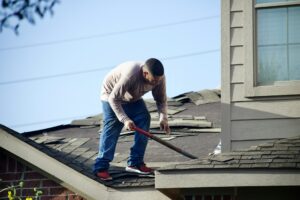Medford has always enjoyed its share of sunny days. Yet if you have spent time outdoors during recent summers, you know something feels different. Increasingly high temperatures have been breaking records yearly, damaging homes and budgets.
Homeowners realize that keeping their interiors comfortable isn’t as simple as it once was. The cost of running air conditioning units all day can escalate quickly. An often-overlooked solution lies in caring for windows. Both their condition and type heavily influence cooling efficiency, and in the face of Medford’s evolving climate, making the right window choices can be a real game-changer.
Changing Climate Patterns
Scientists have long studied shifting weather trends, but Medford’s heat index has drawn particular attention in recent years. The region is experiencing well-documented jumps in temperature. Many residents recall milder summers from two decades ago, noting how summer scorchers would last a few days before cooling rains arrived. Prolonged heat waves are more common, intensifying a heat island effect in urban areas.
Despite mounting evidence, it’s easy to assume these weather fluctuations are temporary. After all, the local climate has always oscillated. Yet the upward trend is significant enough that experts predict a lasting impact on everything from agricultural cycles to home energy use. The Environmental Protection Agency (see EPA’s Heat Islands resource) highlights how persistent extreme heat affects communities, making it crucial to adapt residential buildings to handle higher temperatures.
Energy Bills Rising
In addition to rising daytime highs, nights bring only limited relief. As the mercury stays stubbornly above typical lows, many people run their air conditioning from morning until sunset, steadily draining energy. This prolonged demand shows up in monthly electric bills, causing sticker shock for families trying to plan their household budgets. When record heat extends through consecutive weeks, the cumulative effect on utility bills can be substantial.
Windows wield exceptional influence, while many ways exist to improve energy efficiency. If windows aren’t well-sealed or lack modern coatings, your cooling system works overtime to compensate. This undue stress pulls more power and consequently raises expenses each season. Replacing or updating windows is not the only factor in mitigating costs, but it is among the most direct and impactful.
Understanding Heat Loss And Gain
Windows are more than decorative features. They are connective portals letting in natural light, vital ventilation, and glimpses of the world outside. Yet if they are outdated, windows can also turn into points of significant thermal loss in the winter and primary heat transfer in the summer. During hot months, older single-pane windows let in detrimental levels of radiant energy. They do little to block the sun’s intense rays from heating your interior.
This phenomenon triggers two main issues: – Increased interior temperatures that your air conditioning must battle.
– Strain on your HVAC system, churning exhaustively to maintain an ideal indoor climate.
Consequently, you end up pumping more money into your cooling system. In an era of climbing utility rates, adopting a window strategy designed to reflect or absorb energy in balanced, energy-friendly ways is critical.
Signs Your Windows Need Replacing
Not everyone is ready to replace windows at the first sign of trouble. However, certain clues can signal a need for immediate attention: 1. Drafts or noticeable hot spots by your windows.
- Fogging or condensation between panes indicates failing seals.
- Higher-than-average energy bills, especially in summer.
- Frames that are warped, cracked, or rotten.
- Single-pane designs that transmit large amounts of heat.
When you notice two or more warning signs, it’s worth investigating further. Minor repairs, such as re-caulking or weatherstripping, can help temporarily. Still, truly outdated windows eventually reach a point where a thorough, cost-efficient fix involves replacement rather than short-term patches.
Modern Energy-Efficient Materials
Window technology has advanced significantly in the past decade. Today’s designs incorporate innovations aimed at reducing heat transfer. Some highlights of modern windows include:
- Dual or Triple Pane Glass: By adding multiple layers of glass, these windows create pockets of air or inert gas (often argon) between the panes, hampering heat exchange.
- Low-E Coatings: Low-emissivity coatings reflect heat rather than letting it infiltrate. They reduce interior fade from ultraviolet light while keeping indoor temperatures comfortable.
- Composite Frames: Many new systems use wood composites, fiberglass, or vinyl frames that resist warping and rotting. These materials insulate better than older, less durable options.
Choosing products that meet strict ENERGY STAR® standards ensures you get a window design tested for real results. You can learn more about these rigorous requirements at the U.S. Department of Energy’s website, which details how advanced features save power and reduce annual household energy costs.
Options For Every Budget
It’s easy to assume window replacements must be expensive, but new models come at various price points. While it’s undoubtedly a home-improvement investment, several factors influence overall expense:
- Number of Windows: The more windows you have, the higher your overall costs will climb. If your budget is tight, consider prioritizing certain areas, like south—or west-facing spaces where sunlight is most intense.
- Window Style: Single-hung or double-hung windows can be more affordable. Sliding or specialty windows with ornate shapes or grilles may carry a higher price tag.
- Frame and Glazing Upgrades: Opting for the most advanced frames or coatings provides top-notch efficiency, but these features can add to the initial outlay.
Fortunately, many installers offer financing plans, and local utility companies sometimes provide incentives for energy-saving upgrades. Tax credits also help offset some costs, making the long-term savings all the more attractive. Over time, the difference in monthly utility bills often justifies the price.
Practical Steps To Evaluate Your Windows
It can be helpful to do a quick inspection before bringing in professionals. Simple routine checks can inform the scope of upgrades you’ll need:
- Visually Inspect The Frame
Look for gaps between the window frame and the wall. Gaps or peeling caulk can indicate poor insulation that lets in exterior heat. - Check For Soft Spots
Gently press on wood frames to detect signs of rot. Any areas that easily dent or crumble could require a complete window change. - Listen For Outside Noise
If traffic, lawnmowers, or conversations from outside sound unusually loud, your windows may offer inadequate insulation. Modern double- or triple-pane windows help dampen sound more effectively. - Perform A Partial Seal Test
Place your hand near each window’s perimeter. If you feel a temperature difference or a slight breeze, that’s a red flag for compromised seals.
These steps create a baseline understanding of your existing window performance. Consulting a reputable contractor or energy auditor can confirm whether a repair or a replacement is the longer-lasting and more cost-effective option.
Real-World Example
Picture a Medford family living in a typical single-story home built in the early 1990s. As summers grew hotter, they noticed their air conditioner running almost continuously from June through August. Their monthly bills soared, pushing them to rethink their home’s efficiency strategies.
They began by adding weatherstripping to seal minor drafts, then installed blinds to block direct sunlight. Despite these efforts, the house still felt stuffy, especially in rooms with large bay windows. At the recommendation of a local energy assessor, they replaced their single-pane windows with double-pane, Low-E models.
Immediately, they observed a palpable drop in the temperature by the windows. By the time the following summer arrived, they measured a 20% dip in cooling charges. While the initial window investment was significant, the monthly utility savings made it manageable, and the family found their home a more inviting place during even the hottest days.
The Installation Process
Understanding the key steps of window installation eliminates guesswork on your end. Most professional contractors who specialize in energy-efficient retrofits follow a systematic approach:
- Measuring The Existing Openings
Skilled technicians measure precisely to ensure the new windows fit snugly. Unique architectural layouts mean custom sizing for specific frames. - Preparing The Opening
Before new windows are installed, the old ones must be removed, and the opening must be inspected. Any damage to wall studs or siding discovered will be repaired to preserve structural integrity. - Insulating And Sealing
Contractors apply specialized materials around the frame, such as spray foam or insulating tape, to eliminate potential leaks. Proper sealing keeps out heat, cold, moisture, and pests. - Final Checks
Once installed, the technician tests the window operation. Clean lines of caulk or trim ensure a professional finish. This stage typically includes a quick demonstration so you fully understand how to use and maintain your new windows.
When you hire a certified installer, you gain peace of mind that no steps are overlooked. Mistakes in measurement or sealing can undermine the efficiency gains you’re trying to achieve. Given Medford’s intensifying summers, accurate artistry is key to a comfortable, wallet-friendly home.
Benefits Beyond Cooling Costs
While preventing summer heat from creeping inside is often the primary driver of window replacements, upgraded windows provide several other perks:
- Better Indoor Air Quality: Superior insulation reduces dust, pollen, and combustible smoke infiltration from outside sources.
- Noise Reduction: High-quality windows with extra layers of glass dampen neighborhood or roadway sounds, creating a more serene interior atmosphere.
- Enhanced Curb Appeal: New frames and modern finishes revitalize your home’s exterior, potentially boosting its value if you plan to sell.
- Greater Comfort Year-Round: In the winter, the same thermal barriers that keep out hot air in summer also lock in warmth.
A consistent indoor climate helps you avoid large temperature swings throughout the day, resulting in healthier living conditions.
Planning Ahead
Installing new windows can be a substantial undertaking, so timing is essential. If you wait until the middle of a heat wave, you risk scheduling delays as contractors juggle multiple emergencies. Instead, consider planning the project during milder seasons. You’ll have a chance to research installers, compare quotes, and select an installation window that causes minimal disruptions to your daily routine.
It can also pay to perform simple annual maintenance checks. Clean your windows and frames each season, ensuring that seals remain intact. Promptly address small cracks or gaps before they worsen. Even if new windows are still a few years away, diligent care can help your current setup run more efficiently and extend the lifespan of the materials.
Where To Learn More
If you’d like to anticipate the full benefits of window upgrades, a range of resources can guide you. The U.S. Department of Energy’s Energy Saver program offers in-depth insights on selecting the right materials for your region. Meanwhile, building experts at Green Building Advisor explore best practices for eco-friendly home improvements. Both sites outline how comfort and cost savings intersect with an environmentally responsible strategy.
Moreover, local building authorities in Medford can point you toward area-specific guidance. Specific neighborhoods may have unique requirements or recommended installation approaches. This assistance simplifies your search and ensures compliance with any local code requirements.
Your Windows And The Future
Medford’s weather patterns show that hotter days aren’t likely to retreat. Changing your home’s windows is more than a cosmetic upgrade. It’s a long-term investment in energy efficiency, a smaller carbon footprint, and yourself, because living in a home that remains cozy through sizzling summers and chilly winters can be transformative.
Whether you opt for basic double-pane vinyl windows or high-end fiberglass frames with triple-pane glass, the result is a space that demands less from your cooling system. Over the long haul, you see the difference in reduced utility bills, heightened comfort, and a future-focused home. With each passing hot summer in Medford, forward-thinking homeowners find that window maintenance, repair, or replacement is one of the fastest ways to see tangible results.
Sometimes, the thought of tackling multiple windows can feel daunting. Yet when you consider the money you save and the wear you spare your air conditioner, it becomes clear why updating your windows is a priority. Medford’s climate may change, but with the right approach, you can keep your indoor environment welcoming and healthy without straining your budget.
Final Thoughts
The days of casually ignoring window upkeep in Medford are gone. Rising temperatures and spiking utility bills underscore how much properly maintained, energy-efficient windows matter. Even if you start by fixing minor issues like replacing worn seals or applying Low-E window films, taking direct steps to reduce solar heat intake sets you on the path toward sustained savings.
Staying cool shouldn’t mean accepting an enormous power bill or living in semi-darkness behind drawn curtains. Flood your living spaces with sunlight without worrying about scorching summer rays. From efficient glazing to advanced frame materials, modern window technologies offer benefits and peace of mind that older systems simply cannot match.
You carve out a more stable, cost-effective future by improving your windows. It’s a nuanced decision, but it pays off each time you open your next utility bill and discover how thoroughly your house regulates temperature, even in the face of Medford’s ongoing heat waves. Through thoughtful planning, you transform your living environment into a place to relax, host gatherings, or simply unwind without constantly wrestling with the thermostat.
Staying ahead of Medford’s intensifying summers is an ever-evolving challenge. But with knowledge, proactive upgrades, and a focus on the right details, you ensure that your windows become allies rather than vulnerabilities. In the end, it’s not just about surviving the heat. It’s about thriving comfortably in a place you’re proud to call home.




